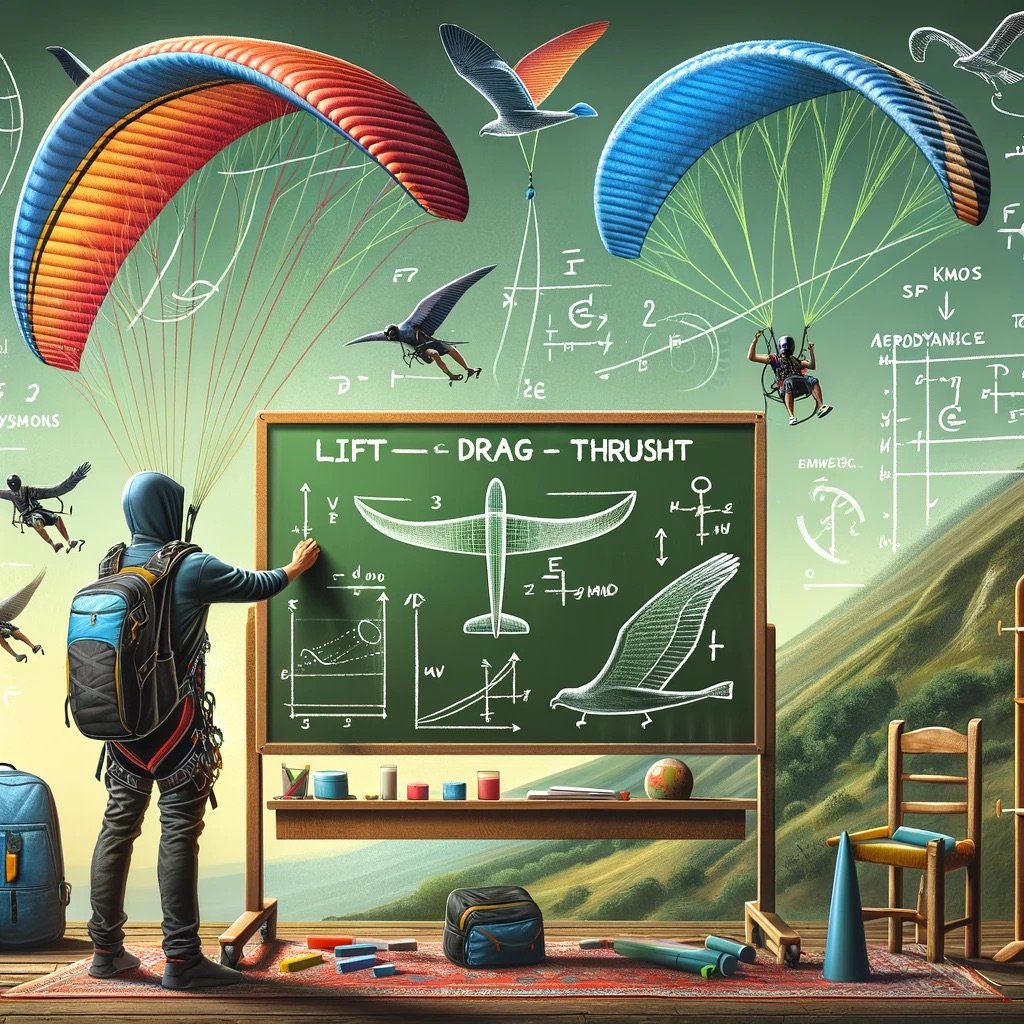A solid grasp of the physics of flight is essential for any paraglider to maximize performance and safety. Here’s an overview of the key aerodynamic principles involved in paragliding.
1. Lift
- Definition: Lift is the force that enables the paraglider to rise and stay aloft. It is generated by the wing as it moves through the air.
- How Lift is Created: The shape of the paraglider wing (airfoil) causes air to move faster over the top surface than the bottom, creating a pressure difference that generates lift.
- Factors Affecting Lift: Wing size, shape, angle of attack, and airspeed all influence the amount of lift produced.
2. Drag
- Definition: Drag is the resistance force that opposes the forward motion of the paraglider.
- Types of Drag:
- Parasitic Drag: Caused by the friction of air moving over the paraglider and pilot.
- Induced Drag: Generated by the production of lift, as air vortices form at the wingtips.
- Minimizing Drag: Streamlining the body position, using efficient wing designs, and flying at optimal speeds help reduce drag.
3. Thrust
- Definition: Thrust is the force that propels the paraglider forward. In powered paragliding, this force is provided by the engine.
- Gliding Flight: In unpowered paragliding, the forward motion is achieved by gravity pulling the glider down a slope through the air, with the wing converting this downward motion into forward speed.
4. Weight
- Definition: Weight is the force of gravity pulling the paraglider and pilot downward.
- Balance with Lift: To achieve stable flight, the lift generated by the wing must balance the weight of the pilot and equipment.
- Impact on Performance: The total weight influences the glide ratio and maneuverability of the paraglider.
5. Angle of Attack
- Definition: The angle of attack is the angle between the chord line of the wing and the oncoming airflow.
- Optimal Angle: Maintaining an optimal angle of attack is crucial for generating sufficient lift without causing a stall.
- Adjusting Angle: Pilots can adjust the angle of attack by changing their body position and using the brake lines.
6. Glide Ratio
- Definition: The glide ratio is the distance a paraglider can travel forward relative to the altitude lost.
- Calculating Glide Ratio: A glide ratio of 10:1 means the paraglider can travel 10 meters forward for every meter of altitude lost.
- Improving Glide Ratio: Efficient wing designs, proper weight distribution, and maintaining optimal speed help achieve better glide ratios.
7. Thermals and Ridge Lift
- Thermals: Thermals are rising columns of warm air that can provide additional lift. Pilots can circle within thermals to gain altitude.
- Ridge Lift: Ridge lift occurs when wind hits a mountain or ridge and is forced upward. Flying along the ridge allows pilots to stay aloft using this lift.
8. Stability and Control
- Pitch, Roll, and Yaw: Understanding how to control the paraglider’s pitch (up and down), roll (side to side), and yaw (left and right) is essential for stable flight.
- Active Piloting: Actively managing the wing’s position and responding to changes in airflow helps maintain control and avoid collapses.
Conclusion
Understanding the physics of paragliding is crucial for optimizing performance and ensuring safety. By mastering concepts such as lift, drag, thrust, weight, angle of attack, and glide ratio, pilots can make informed decisions during flight. Embrace these principles to enhance your paragliding skills and enjoy a safer, more efficient flying experience. Happy flying!









